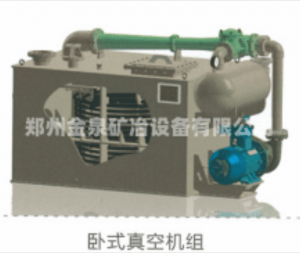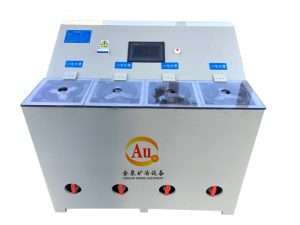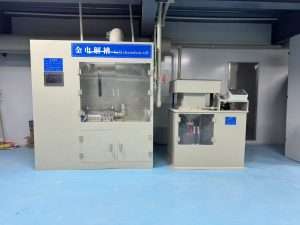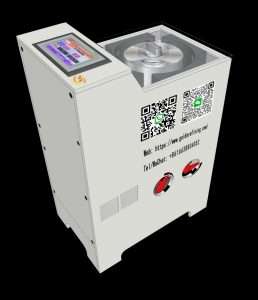Call us now:

Vacuum unit equipment
I. Equipment Features The vacuum unit is composed of a series of units including anti-corrosion PP water tank, buffer tank, RPP water jet pump, check valve, steam-water jet pump, and
I. Comprehensive comparison of various technologies for regenerative extraction of platinum group metals from auto catalysts.
Regenerative extraction of platinum group metals from auto catalysts is a worldwide issue, although various technical processes can achieve the purpose of regenerative recovery of platinum group metals, but the recovery rate, consumption, environmental protection, efficiency (processing cycle), equipment investment times and industrialization implementation difficulties and other comprehensive indicators for comparison. The wet technology of pressurized cyanidation has no application value, and chlorination leaching will eventually be eliminated. Fire melting has stronger applicability and adaptability, and the secondary waste generated can meet the environmental requirements. At present, some precious metal recovery plants in the world almost all use fire melting enrichment. Fire enrichment process, physical phase reconstruction melting, plasma melting, copper melting, lead melting and other enrichment technologies, in the comprehensive utilization of the degree, technical indicators and other aspects of their advantages and disadvantages.
Second, the characteristics of waste catalysts.
The early catalysts were made of y-Al2O3 as a carrier, in the form of small spheres, which are not used now. Now mainly with high melting point of silicon, aluminate (iron cordierite 2FeO- 2AI2O3-0.5SiO2 and magnesium cordierite 2MgO- 2Al2O3.0.5SiO2) and metal two materials, made of cylindrical honeycomb or multi-layer cylindrical carrier. The carriers are first impregnated with Y-AI2O3 active coating, dried and then impregnated with precious metal solution. After reduction and sintering, the catalysts are made. Cordierite binary catalysts contain Pt 0.04%, Pd 0.015%, total 550g/t. Ternary catalysts contain Pt 0.08-0.12%, Pd 0.017-0.04%, Rh 0. 007-0.014%, total 1000-1500g/t. Platinum metal is attached to the surface of the active coating of the carrier in micro particles of <1um.
Due to the high melting point of the carrier, the chemical inertness and insolubility of the acid, the low quality of the precious metals, the penetration of some of the precious metal particles into the carrier during high temperature use, or the partial sintering and local glazing of the carrier, or the transformation into chemically inert oxides and sulfides, etc., the technology of recovering platinum group metals from automotive catalyst waste is correspondingly complex and difficult to recover. These characteristics make the study to develop the principles of the recovery process and the development of the overall technology, representative in the field of secondary resource recycling.
The enrichment techniques that have been studied or partially applied can be divided into two categories: fire melting and wet leaching, with large recycling plants mostly using fire melting enrichment.
For example, the precious metal catalyst project in Shangrao, Jiangxi, China
This project of Zhengzhou Jinquan customer originally built a project to treat 600 tons of precious metal catalysts and 2,000 tons of silicon waste per year for comprehensive utilization. In order to enhance the competitiveness of the enterprise, it added 2,400 tons of precious metal catalysts per year, so from November 2020, it signed three contracts with our company one after another to build a palladium refining production line, to its 2# production workshop, 1# production workshop and R&D building to carry out renovation, and to be responsible for the waste gas treatment of 1# workshop, 2# workshop and R&D building.
The project is located in Shangrao, Jiangxi, China. The main raw materials are waste catalysts containing platinum, palladium, rhodium, gold and iridium ruthenium, and the products such as palladium, platinum, rhodium, gold, iridium precious metals and ruthenium trichloride are recovered by roasting pretreatment + wet smelting process; palladium, platinum and rhodium precious metals are recovered by melting pretreatment + wet smelting process with waste ternary catalysts as raw materials; silver precious metals are recovered by desilvering + electrolysis + wet smelting with waste silver catalysts as raw materials. Silver precious metals, with corresponding auxiliary facilities and waste gas treatment projects, to achieve an annual output of 64 tons of rare precious metals and their compounds.

I. Equipment Features The vacuum unit is composed of a series of units including anti-corrosion PP water tank, buffer tank, RPP water jet pump, check valve, steam-water jet pump, and

Jinquan Electrochemical Deposition Equipment The electrochemical deposition system has revolutionized traditional metallurgical processes through dynamic flow field control technology and is widely used in

Intelligent gold electrolysis equipment combines automatic control, intelligent monitoring and efficient electrolysis technology. It can process raw gold materials with a purity of more than

Jinquan Electrolysis - Cyclone Electrowinning Equipment Cyclone electrowinning equipment is widely used in gold plating solution, gold stripping solution, gold ore heap leaching, spraying solution